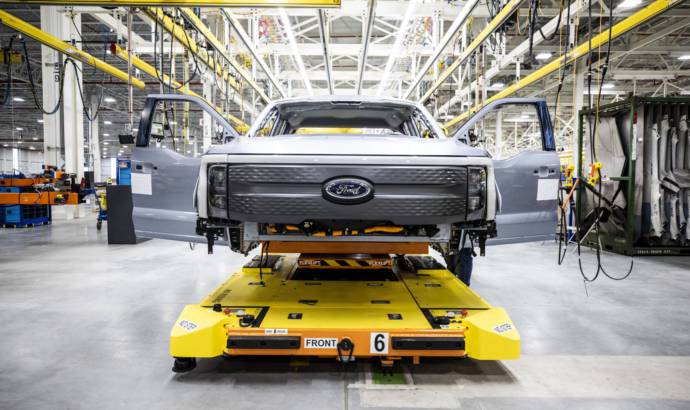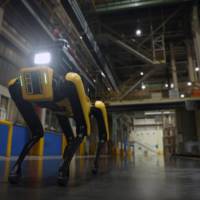Ford is pursuing its electric direction with the new F-150 electric, that recently entered production in US.
As the first pre-production F-150 Lightning trucks roll out of Ford’s new Rouge Electric Vehicle Center and demand soars for the all-electric truck, Ford today said it will increase investment and add jobs to boost production.
Ford is investing an additional $250 million and adding 450 more direct jobs across the Rouge Electric Vehicle Center, Van Dyke Electric Powertrain Center and Rawsonville Components Plant. The investment and added jobs will help increase production capacity to 80,000 trucks a year.
F-150 Lightning, with a starting price of $40,000 and targeted EPA-estimated driving range of 300 miles with the extended range battery, is aimed at the heart of the U.S. auto market. Ford has taken more than 150,000 reservations for the trucks to date.
Ford confirmed construction of the Rouge Electric Vehicle Center a year ago as part of an initial $700 million investment in the historic Ford Rouge Center, creating a manufacturing home for the F-150 Lightning. Now Ford’s pre-production F-150 Lightning trucks are leaving the factory for real-world testing, with the truck available to customers next spring.
Ford’s $250 million additional investment will create 450 additional hourly direct jobs, with most of those workers assembling the F-150 Lightning at the Rouge Electric Vehicle Center. Workers at Rawsonville Components Plant will assemble the batteries and Van Dyke Electric Powertrain Center will increase its capacity to supply electric motors and electric transaxles for the F-150 Lightning.
The Rouge Electric Vehicle Center is in the Ford Rouge Center, which sets the benchmark for sustainable automotive assembly. This new center supports Ford’s vision of sustainable production as a zero waste-to-landfill site.
The center uses natural lighting, as well as LED lighting and the primary forklift fleet will use hydrogen fuel cells with a zero-emission profile. The Rouge Electric Vehicle Center is built on the site of the old Dearborn Assembly Plant, using its recycled foundation and construction materials.



